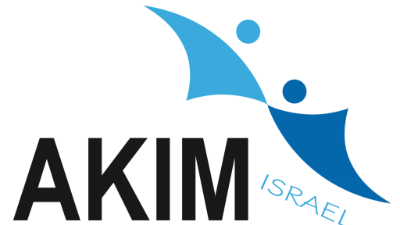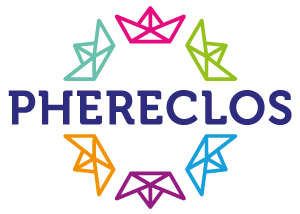Cognitive Accessibility Programme
- Israel,The whole country
- 2005

| Time frame | |
| Categories | |
| Level of Schools | |
| External Partners | |
| Type of Schools | |
| URL | |
| Number of Schools involved | |
| Number of Schoolheads involved | |
| Number of Teachers involved | |
| Number of Students involved | |
| Number of Parents involved | |
| Number of External Partners involved |
The main aim of the “Cognitive Accessibility Programme” is to realise the rights of people with disabilities, especially intellectual disabilities, promote better quality of life and improve the quality of life for their main target group as well as their families. Part of this overall aim is to promote and support the collaboration between schools, museums and historic sites for accessible and inclusive education at these non-formal education sites. AKIM has initiated and leads a national programme to make museums and historic sites cognitively (as well as physically) accessible.
The main aim is to realise the rights of people with disabilities, especially intellectual disabilities, promote better quality of life and improve the quality of life for their main target group as well as their families. Part of this overall aim is to promote and support the collaboration between schools, museums and historic sites for accessible and inclusive education at these non-formal education sites. AKIM has initiated and leads a national programme to make museums and historic sites cognitively (as well as physically) accessible.
They wish to make education more inclusive by offering new services to the intellectually disabled, support the social inclusion of these people by this and to help bring the level of education to the level of intellectually disabled people.
The programme first implemented in 4 sites was a pilot for legislation that is now in place.
Although the programme has not yet been in place for more than 5 years, there is a clear mindset change that is a solid ground for sustainability. They have trained hundreds of professionals that ensures sustainability, too.
The programme has two main paths: one is training - of staff at the museums and sites, in initial teacher education, social workers to educate hundreds of trained education coordinators; the other is developing aids that the museums and sites can use in their daily education practice.
There is government funding for introducing new measures to make the museums and sites more accessible. It covers training, professional support and investment needs if any. However, the methods result in a mindset change at the museums, and this means there is no real need for further funding after the initial phase.
The programme has reached about 4000 people from the main target group, people with intellectual disabilities so far. As a pilot it resulted in new policy and legislation. Museums and historic sites all over the country are now using this methodology to become accessible and inclusive, and thus making collaboration with local schools. It helped the implementation of the rights of people with disabilities and improved the quality of life for these people.
It is a wide collaboration in which a specialized NGO brings knowledge and innovation to museums and historic sites that work together with inclusive schools in their respective local communities, teacher training to ensure the availability of experts on the long run, and it is embedded in a government commitment towards inclusion and rights. In many countries, schools are obliged to be inclusive but often lack tools to include all children. This initiative is inspiring as it shows how a non-formal provider can help adjust the level of education to the needs of children. It is a programme that caused a snowball effect by causing mindset change; that means little to no funding is necessary for sustaining and widening the network.
Innovation lies in the trainings that help professionals change mindsets to become inclusive towards intellectually disabled people. It is another innovative element that they co-design aids for their target group, that in turn, may also help the inclusion of others (e.g. Historic sites are usually not accessible for physically disabled either).
They support the sites to develop their own accessible aids to ensure levels meet the needs of their target group. That means all students can enjoy non-formal learning together.
It is the local decision of museums as well as schools if they participate in the programme.
It is about learning and social inclusion of the specific target group by offering a service that meets needs of students at various knowledge and cognition levels.
The approach combines special pedagogy, museum pedagogy, science and arts education in general.
It aims at educating professionals who can deliver education in their own discipline in an accessible way.
AKIM offers continuous support to museums, sites and schools in case they encounter further challenges, and they keep being involved in training professionals.AKIM offers continuous support to museums, sites and schools in case they encounter further challenges, and they keep being involved in training professionals.AKIM offers continuous support to museums, sites and schools in case they encounter further challenges, and they keep being involved in training professionals.AKIM offers continuous support to museums, sites and schools in case they encounter further challenges, and they keep being involved in training professionals.AKIM offers continuous support to museums, sites and schools in case they encounter further challenges, and they keep being involved in training professionals.AKIM offers continuous support to museums, sites and schools in case they encounter further challenges, and they keep being involved in training professionals.AKIM offers continuous support to museums, sites and schools in case they encounter further challenges, and they keep being involved in training professionals.AKIM offers continuous support to museums, sites and schools in case they encounter further challenges, and they keep being involved in training professionals.
Digital technologies are widely used as most of the special aids they develop are digital.
It cannot be judged if all the partners are truly committed to inclusion in education, but legislation brings them together to collaboratively find answers to a challenge, compulsory inclusion in schools. According to our knowledge, the collaboration between AKIM and the museums/sites is very good, and we can say the same for schools as they have a positive experience related to children at their school. It is to be noted that Israel is a highly child-centred country. At the same time, AKIM has formulated criticism when mentioning that parents are not involved in this programme, they do not even come as adult supervision when schools’ groups visit museums/sites.
The government plays a very important role in the collaboration by putting accessibility and inclusion regulations in place and providing funding for making it a reality. AKIM works with museums and historic sites offering them knowledge base, training and support, but at the end of the day, it is these sites that implement a new programme and work with the schools directly.
The aim of the work AKIM coordinates is to initiate a mindset change at museums, historic sites, but also at schools for disability inclusion.
AKIM had a main task force working on implementation of the programme, organizing trainings and supporting sites.
